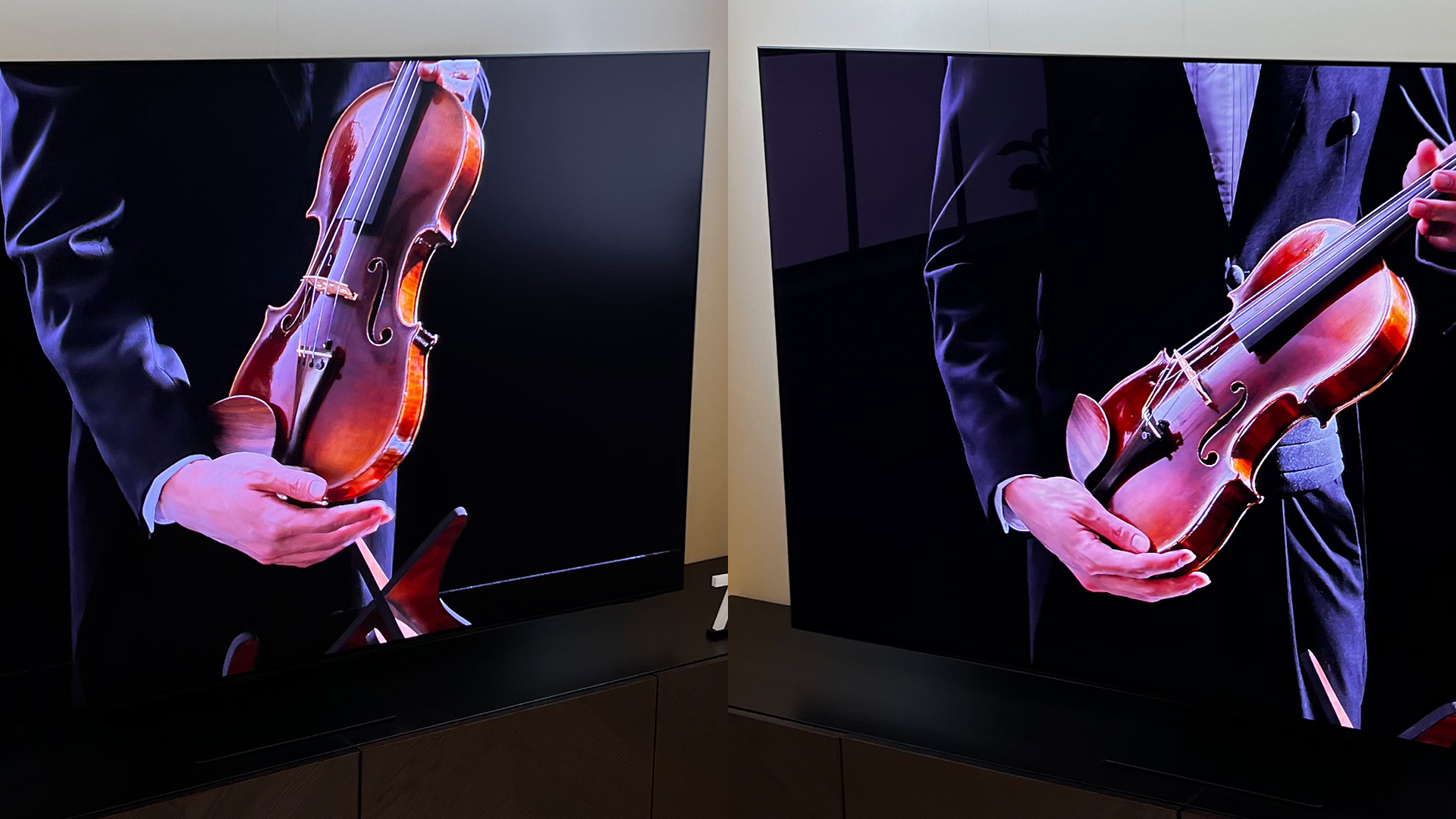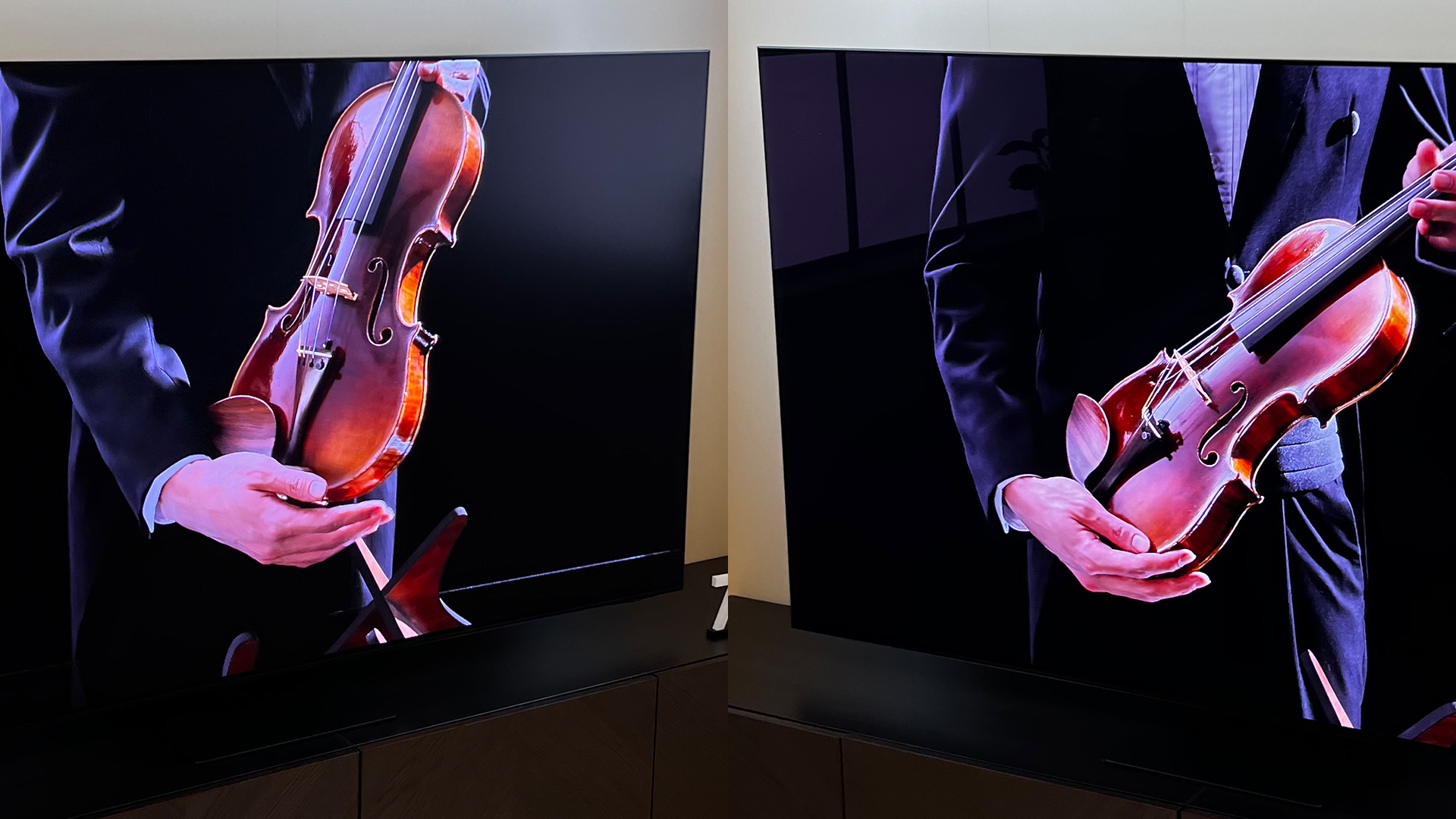
Samsung just unveiled its new, brighter OLED TVs at CES 2024, and I had the chance to see them in person straight after the big reveal, along with with its new soundbars for 2024 and fascinating picture frame speaker.
One of the upgrades to the Samsung S95D flagship OLED TV is a new anti-reflection screen, and I'm on record as saying that I think reflection-busting tech is going to be a big new feature on the spec lists of TVs in the next couple of years, so naturally I made a beeline straight to see this.
Samsung clearly saw me coming, because it had the S95D on display next to the Samsung S95C, in a room set up with identical simulated windows next to each TV, giving the effect of sunlight streaming onto the TV. Standing in the middle and looking at the two models, I could see the reflections of these matching windows in the corner of each screen, so I could assess the difference directly – and see how the new TV improves on the old elsewhere while I was at it.
The image at the top is a comparison of the two – here it is again.

Look at the corners of the screen in the center of the image. On the older TV on the right, the reflection of the screen is fully defined – you can see the exact edges of it, the lines of the window panes. And though it doesn't look that overly bright in this photo (I would say that in real life, it jumped out of the image more than it does here), it's still interfering with the clarity of the picture where it overlaps with the guy's jacket. It washes it out, and interferes with the contrast.
In contrast, the picture on the left has lost all the definition of the of the shape of the reflection, which means in practice that your eye doesn't focus on it so much. Contrast is a huge part of how humans perceive detail, and by removing the definition of the reflection, it's lost a big part of its contrast, so it doesn't have such an effect on the picture. Again, the photo is a little misleading here, because I think the brightness of the reflection looks a little higher than it does in real-life (it's hard to get two good mostly matching photos of this stuff!) – but the real proof of the effect is in how that reflection isn't interfering with the violin. The reflection does overlap with it, but the violin just looks fine.
The S95D is also being helped by its improved brightness, though I've intentionally chosen an image where that can't account for all that change, because it's not that bright a picture.
However, the improved brightness of the S95D is visible in practice, particularly on scenes with lots of contrast in it. Samsung's demo included a textured glove that had lots of little light and shadowed areas next to each other, and the lighter areas had an extra pop on the newer model, which in turn makes you perceive the dark tones as being even deeper (even though the dark stuff hasn't really changed from the last model).
So for me, the anti-reflection tech is the most impressive thing here, though I will say that based on my very limited demo so far, I think the tech here is slightly less impressive than the anti-reflection tech used in micro lens array OLED panels, such as the LG G3 and Panasonic MZ2000 (and will appear again in the LG G4 and the newly announced Panasonic Z95A), or Hisense next-gen anti-reflection tech.
But it's clearly an upgrade nevertheless, and for those still holding out against getting OLED because your room is bright, it could sway you into picking up one of the best OLED TVs, if tech like this is in there.
It's just a shame that this is limited to the flagship model, and won't appear on the less bright Samsung S90D TVs, where it would have even more impact to help clamp down on reflections. Hopefully that's what I'll be writing about at CES 2025.
Check out our CES 2024 hub for all the latest news from the show as it happens. We'll be covering everything from 8K TVs and foldable displays to new phones, laptops, smart home gadgets, and the latest in AI, so stick with us for the big stories.
And don’t forget to follow us on TikTok for the latest from the CES show floor!







